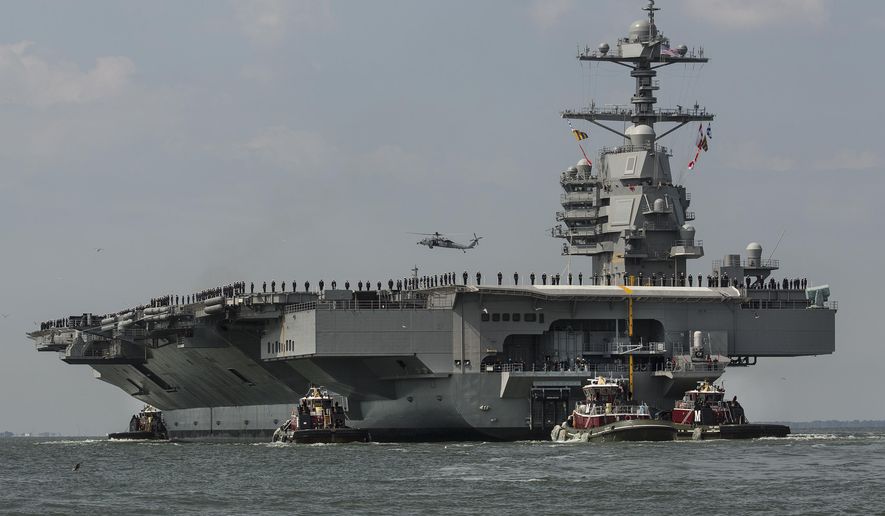More than four years after it was commissioned, the Navy’s newest and most expensive aircraft carrier is one step closer to being fully operational now that it can get bombs up to the flight deck.
The $13.3 billion USS Gerald R. Ford came into service in July 2017. Since then, it has been bedeviled with a number of technical headaches, most especially the advanced weapons elevators that are supposed to transport munitions from the storage areas to the hangar bays where the fighters can be armed.
The 11 weapons elevators on the Ford use electromagnetic motors rather than hydraulics, as is the case with the current fleet of Nimitz-class aircraft carriers. Getting them to work properly became such a challenge that former Navy Secretary Richard Spencer joked that then-President Trump should fire him if they weren’t up to speed by mid-2019.
The Navy says the new high-tech elevators mean fewer sailors will be required to safely move ordnance from weapons magazines to the flight deck with “unparalleled speed and agility.” A lack of working weapons elevators can substantially limit an aircraft carrier’s ability to conduct combat operations, the Congressional Research Service said in a study of the new Ford-class of aircraft carriers.
On Thursday, the Navy said technicians completed the final maintenance task on the last elevator.
“This is a significant milestone for the Navy, ship and her crew,” Rear Adm. James P. Downey, the Navy’s program officer for aircraft carrier construction, said in a statement. “With completion of this final [elevator,] we now have the entire system to operate and train with.”
The weapons elevators are among almost two dozen brand-new technologies that were introduced for the Ford-class carriers. Others included the Electromagnetic Aircraft Launch System (EMALS) and the Advanced Arresting Gear (AAG) that are billed as a major upgrade from the steam-powered systems of Nimitz-class carriers.
To avoid any additional delays, Navy officials said the crew assigned to the USS Ford could begin training even while the shipbuilders were dealing with the elevators and other technical issues. The ship completed more than 8,000 aircraft launches and recoveries using EMALS and AAG earlier in the year, Navy officials said.
The carrier is in the midst of a six-month dry-dock period in the Norfolk area, which is scheduled to be completed in the spring.
“The endgame is always operational readiness,” Rear Adm. Downey said. “Ford is on track to complete this [dry-dock] on schedule, conduct sea trials and to move on to follow-on tasking.”
The USS Gerald R. Ford is the first of at least five Ford-class carriers the service has planned. One will be named after Doris Miller, a Black sailor who received the Navy Cross for heroism during the attack on Pearl Harbor and was later killed in combat during fighting in the Gilbert Islands of the Pacific theater.
• Mike Glenn can be reached at mglenn@washingtontimes.com.




Please read our comment policy before commenting.